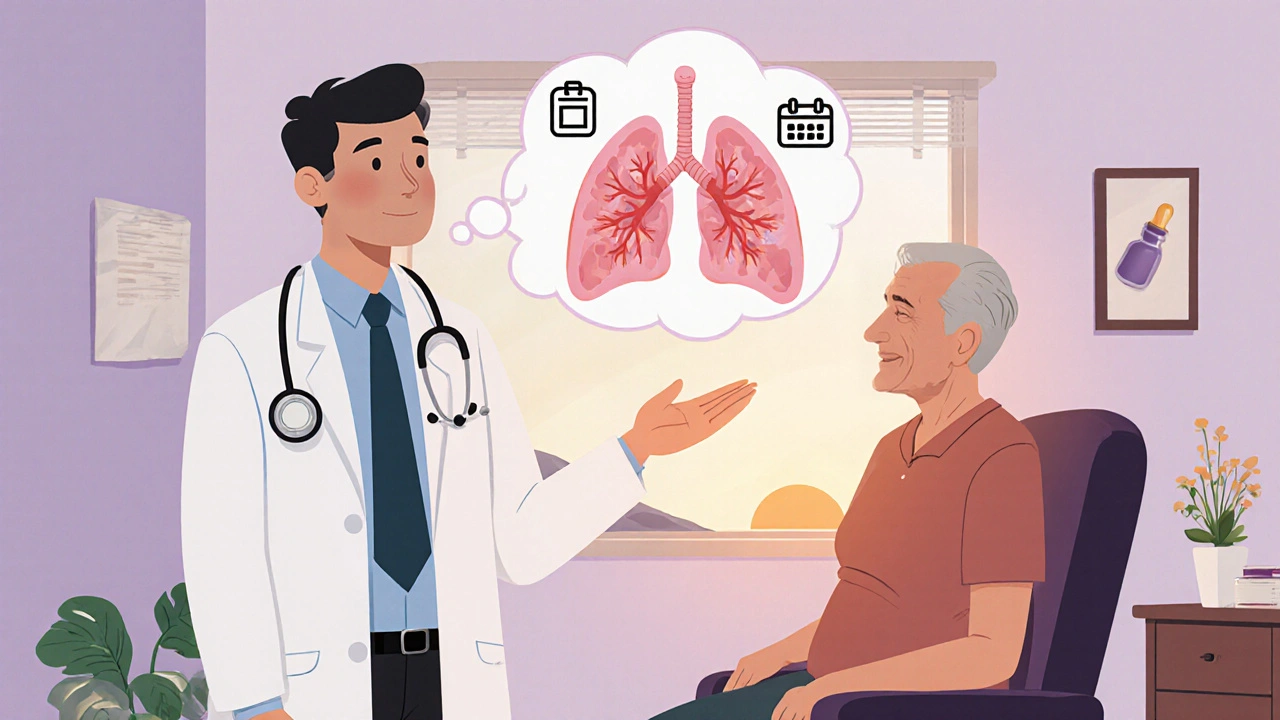Idiopathic Pulmonary Fibrosis Treatment – Guides & Updates
When navigating idiopathic pulmonary fibrosis treatment, the medical approach for a chronic, progressive lung scarring disease. Also known as IPF therapy, it aims to slow fibrosis, improve quality of life, and extend survival.
Early diagnosis is the first pillar of effective care. The moment a clinician spots unexplained breathlessness or a characteristic high‑resolution CT pattern, idiopathic pulmonary fibrosis treatment can be set in motion. This early step enables the next two pillars—targeted medication and supportive strategies—to work when the disease is still manageable. In practice, doctors often pair lung function testing with multidisciplinary evaluation, because a timely decision can mean the difference between stabilizing the disease and rapid decline.
Key Treatment Options
Antifibrotic therapy, drugs like nintedanib and pirfenidone that slow scar formation by inhibiting key pathways forms the core of modern IPF management. Both agents have proven to reduce the rate of forced vital capacity loss by roughly 50% in large trials, and they also lower exacerbation risk. Choosing between them depends on patient tolerance, liver function, and side‑effect profile—common issues include gastrointestinal upset for nintedanib and photosensitivity for pirfenidone.
When disease progresses despite medication, lung transplantation, surgical replacement of diseased lungs for eligible patients becomes a life‑extending option. Survival rates exceed 70% at five years for well‑selected candidates, but the pathway involves strict eligibility criteria, extensive rehab, and lifelong immunosuppression. Complementary to surgery, pulmonary rehabilitation programs improve exercise capacity, reduce dyspnea, and teach breathing techniques that patients can use daily.
Finally, participation in clinical trials, research studies testing new drugs, combination regimens, and innovative delivery methods gives patients access to cutting‑edge therapies while helping the medical community refine future standards of care. Trials often explore next‑generation antifibrotics, gene‑editing approaches, and novel anti‑inflammatory agents. Keeping an eye on trial registries or speaking with a specialist can reveal opportunities that match a patient’s disease stage and health status.
Below you’ll find a curated selection of articles that dive deeper into each of these areas—drug comparisons, monitoring tips, transplant evaluation, and the latest trial outcomes. Whether you’re a patient, caregiver, or clinician, the resources ahead will help you navigate the complex landscape of IPF treatment with confidence.
Esbriet (Pirfenidone) vs Other IPF Drugs: Full Comparison Guide
A detailed comparison of Esbriet (pirfenidone) with nintedanib and other IPF treatments, covering efficacy, side effects, dosing, cost and practical tips.
Read more
